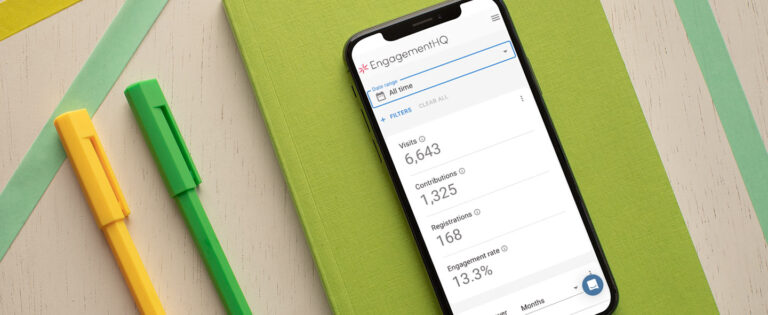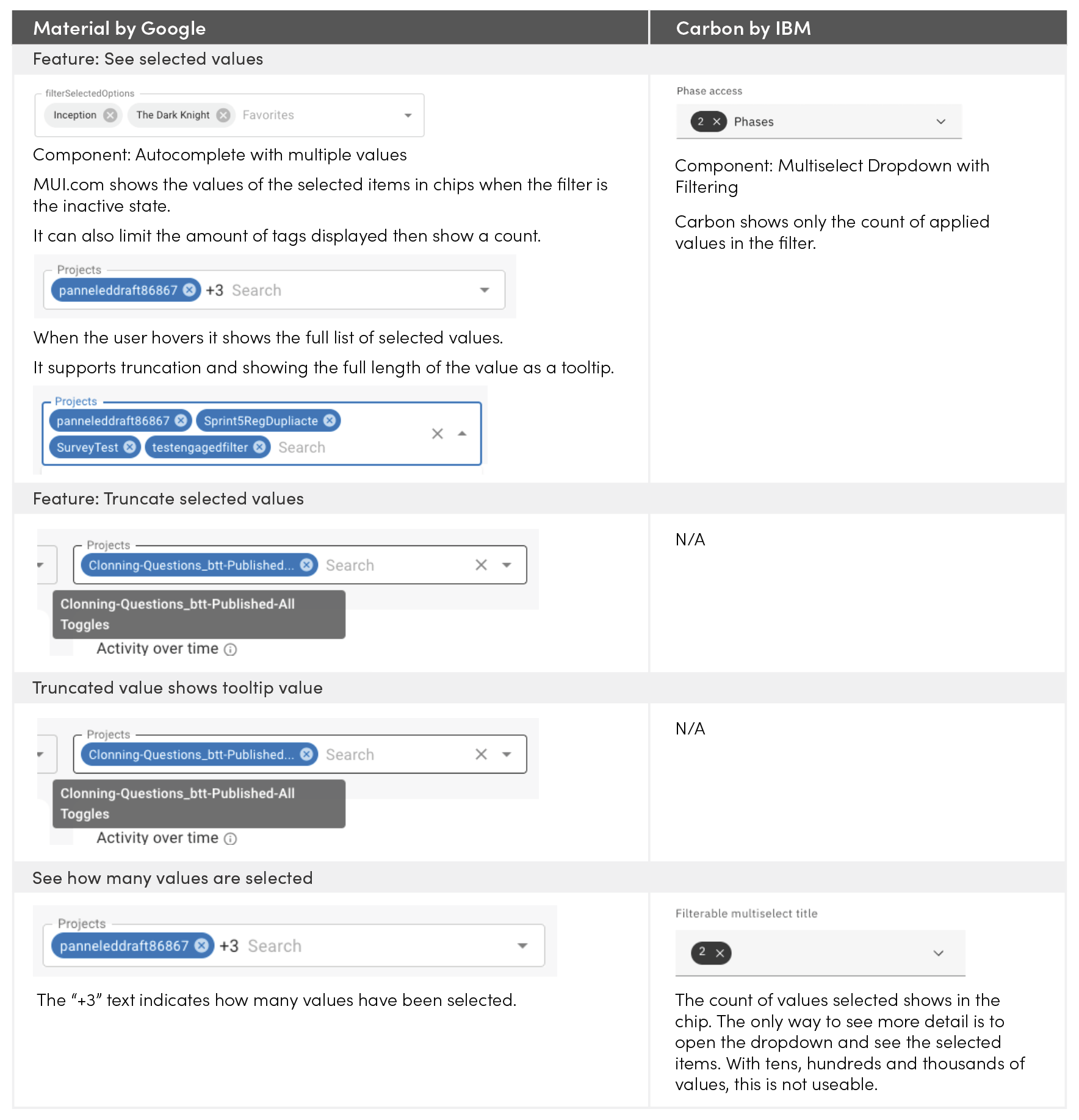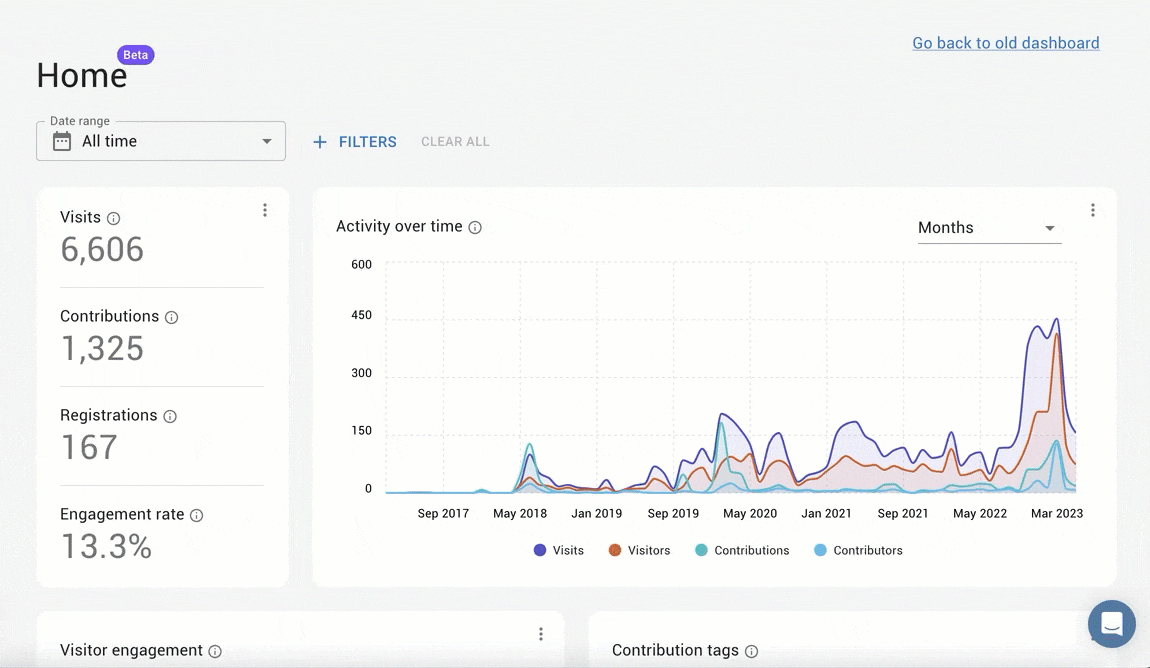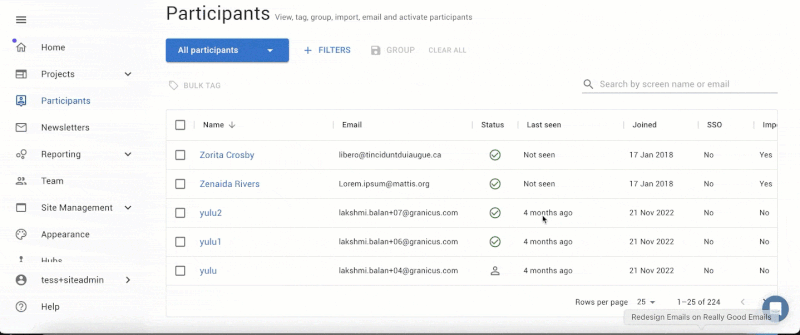
Product vision is the bridge between strategy and execution, and it’s the catalyst for moving our teams towards a compelling and coherent future. Over the past 16 years, our vision has guided us to establish a unique breed of SaaS for digital engagement focused on great user experiences and ensuring digital engagement is easy and accessible to all organizations.
Today, we are revealing the next iteration of EngagementHQ. The previous version: Blue Haven, is more than three-years-old, so we knew we needed an ambitious new vision for the next generation of EngagementHQ. Here’s how we did it.
The landscape was primed for an EngagementHQ redesign, and the need for a change was evident.
Rolling out the Blue Haven interface update in 2020 taught us that an iterative release with minimal customer impact was critical to a successful launch. It captured the need for a clear vision, so we decided to focus on three key areas:
Refresh core tools and make them embeddable, stand-alone, performant, and accessible.
Introduce new shareable dashboards and better tell the story of who is saying what.
Remove barriers to participation with a clean architecture and mobile-first interface.
With our focus locked in, our product team got to work. We ran workshops, gathered customer insights, and uncovered critical components of the new design.
We learned from our research and previous work that we were not willing to compromise on four key factors: usability, clarity, consistency, and accessibility.
Usability was important to ensure our users could easily navigate the product and understand how to interact. We achieved this by using familiar patterns and ensuring that elements were easy to build with, reducing the need for custom coding, which allowed us to bring new features to the market faster.
Clarity was also essential. We wanted to ensure that users could easily understand the feedback they received on actions, such as “saved,” “delete,” or “sent.” To achieve this, we included more placeholders and hints in form fields and used consistent words and terms throughout the product to make navigation simple and intuitive.
Consistency was another key factor. We wanted every page to have the same title and button area, with the same font sizes so users can quickly see what their options are on the page. We also set button positions, icons, and colors for topics and statuses for a cohesive and polished look.
Finally, we recognized the importance of accessibility. We structured our design for accessibility by testing the color contrast and aligning it with global standards to make it easy for all users to access and use our product.
Our first piece of exploration was to audit and collect information about the various page types in our user interface and map consistent areas within them to:
A new component library would allow one set of styles to be applied efficiently to the identified areas. It took months of investigation, but we narrowed it down to two component libraries for comparison: Material by Google and Carbon by IBM.
After our audit and selection of candidates, we worked on a comparison to determine which best met our requirements, many of which were crucial for better filtering in reports and dashboards.

The deciding factor was the dropdown option and the look and feel. We had the most collective confidence in Material components. Adding elemental designs made the vision feel fully coherent and compelling. This decision enabled us to create a design system that would be our north star for all new features moving forward.
We now had a vision for both the “what” and the “how”. This asset was the catalyst for shifting our team into execution mode. And as we began to build, we continually referred to the style guide to ensure we hadn’t veered off course.
It’s been special to start to see our vision out in the wild in the form of our new participant profile, navigation, home dashboard, and participant management.


But it’s been even more special to see the reaction from our customers who are loving what they are seeing: “It helps us understand the overall level of engagement across the platform (which is something we are trying to address).”
So that’s the story of our most recent reinvention and how we went from vision to reality. We can’t wait to share more of what’s to come.